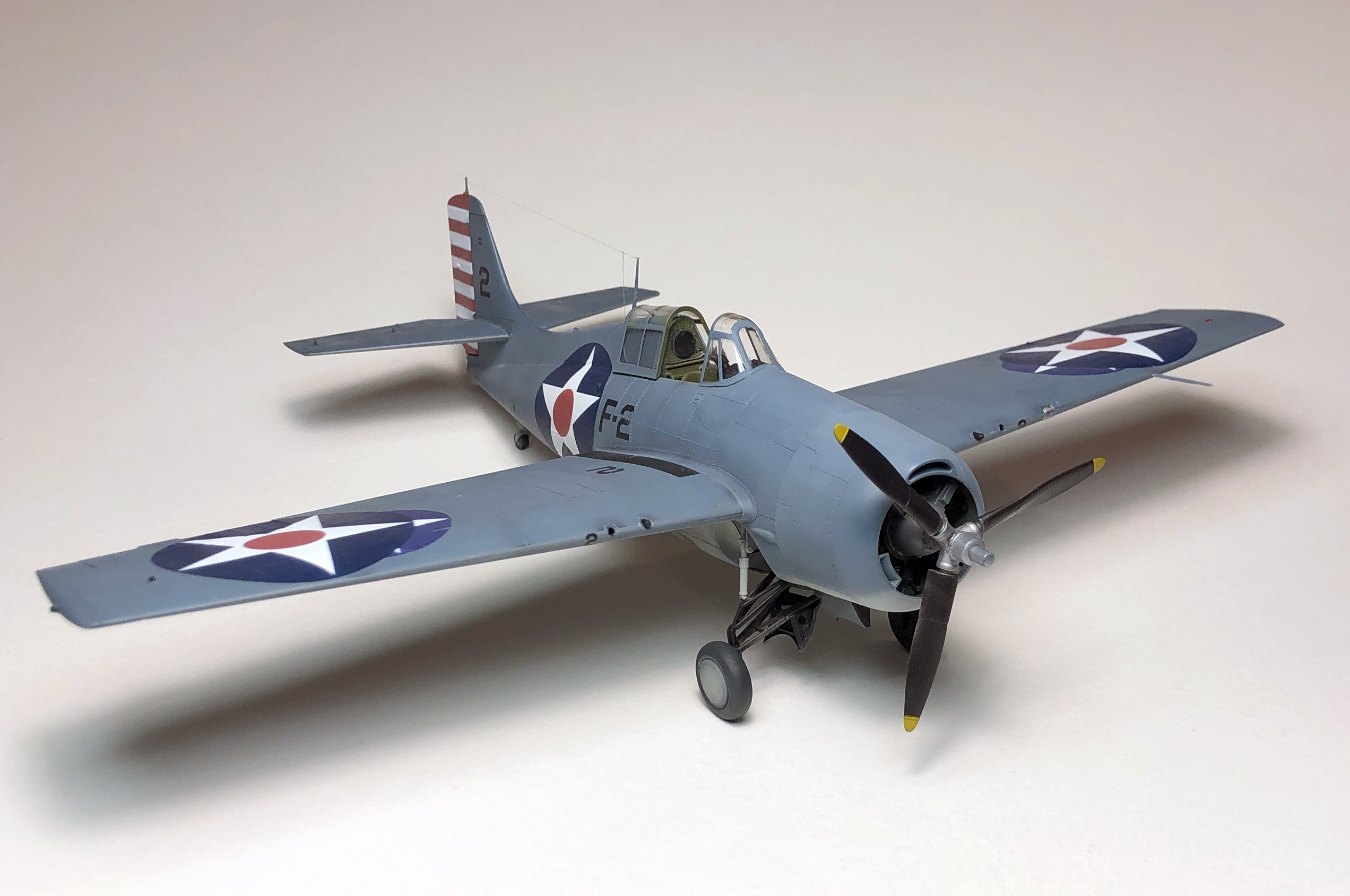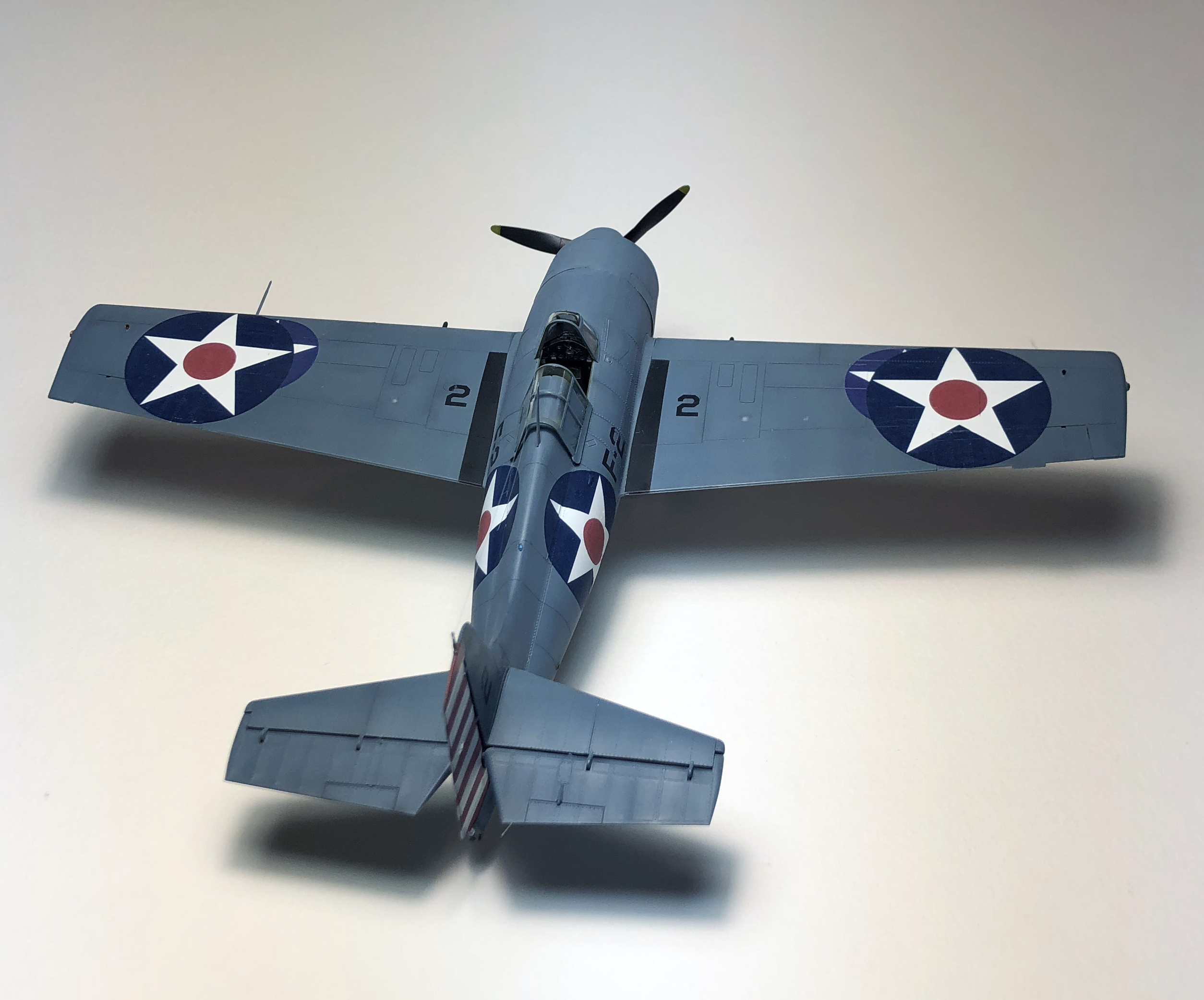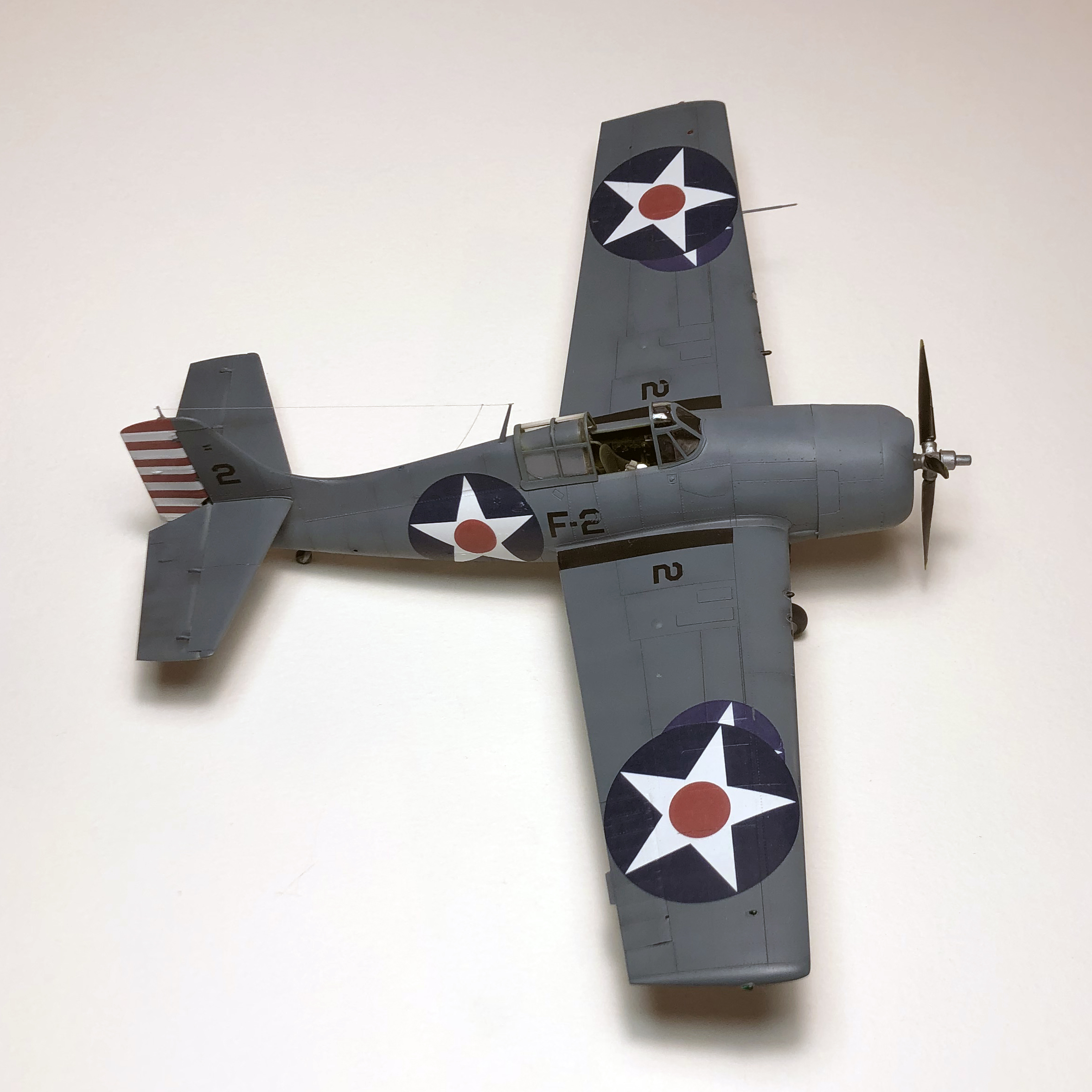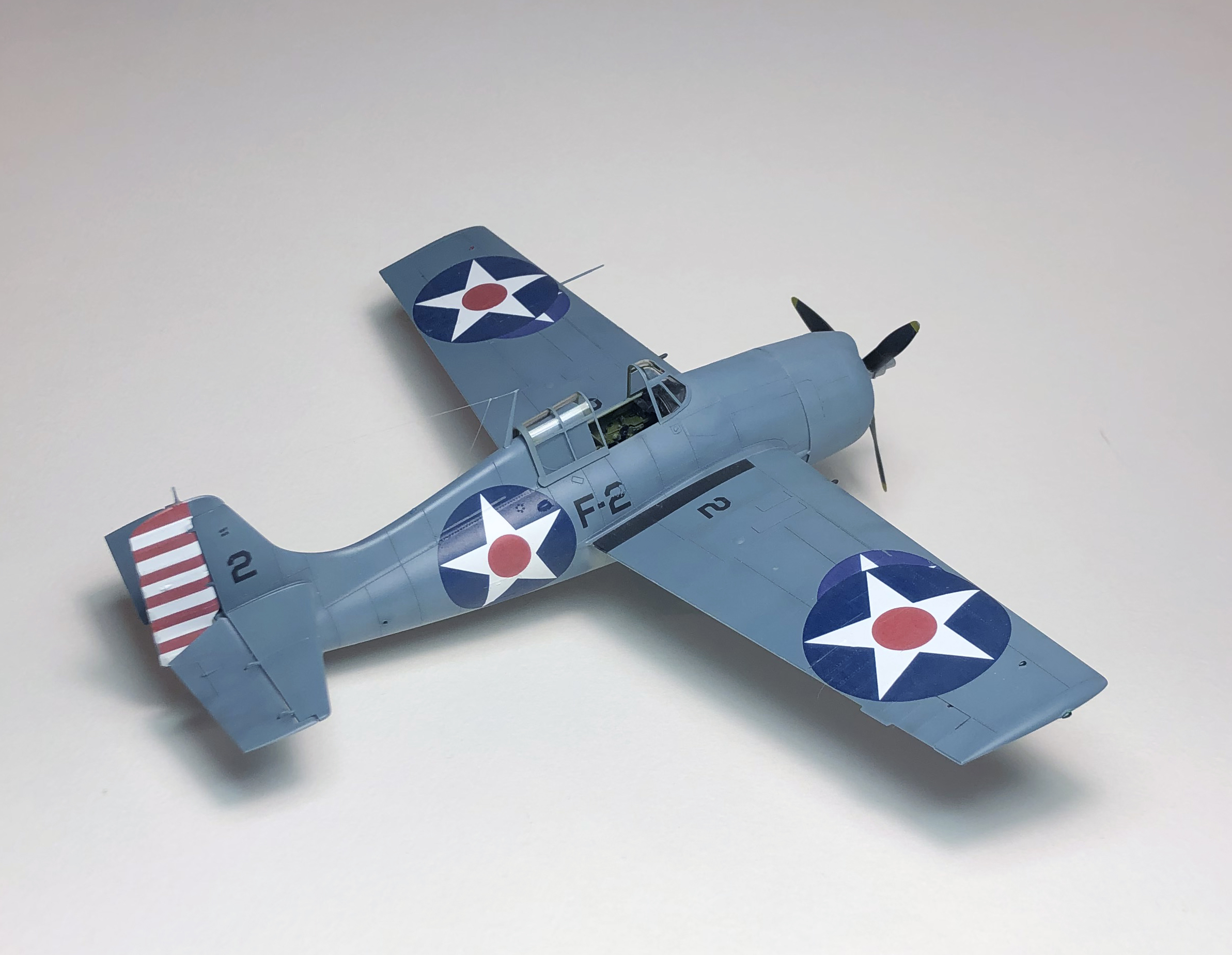Eduard F4F-3 Wildcat, 1/48th Scale
By Phillip Friddell on 19th Aug 2022
A year or so ago the folks at Eduard announced their intention to release state of the art kits of a great many of the American fighters of the Second World War, all in 1/48th scale. The announcement has been soundly received by the polystyrene modeling community as a whole since most of the airplanes that would be covered by that business model (not counting the P-51D Mustang, of course, a type which seems to see a new kit released at least every 18 months or so) are in need of replacement or, in a handful of admittedly marginal instances, a dire need of a mainstream kit of any kind. The first such "new" (read "not a Mustang") offering was promised to be a Grumman F4F-3 Wildcat and Eduard have kept their word. It's here, and it's pretty darned nice.

So what do you get when you plop down your money for Eduard Kit # 82201 F4F-3 Wildcat? For starters you get an F4F that actually looks like an F4F when it's completed. The detailing is among the finest we've seen on a plastic model, extremely petite and true to scale. Component design is intelligently done and the fit is impeccable, albeit with the usual Eduard caveat: Many of the parts are tiny, they have to go where they're designed to go, pretty much in the order they're meant to be installed, and they have to fit properly. You might give serious thought to following the instructions on this one.

This initial release of the Wildcat is a typical Eduard ProfiPack Edition in that it's a multimedia kind of kit. Most of the model is molded in polystyrene but there are also photoetch parts in the box which can be used, or not, at your discretion. A bare-bones version of this kit---think Weekend Edition or even a box of over trees in this instance---will yield a finely detailed model with minimal aftermarket required. In point of fact, the kit's decals provide instrument panels should you desire to avoid dealing with photo-etch for those components, which means that there are only a couple of items of aftermarket that you might actually want to incorporate into your Wildcat model. The first, a set of wide lap belts, comes with the kit. The other is less joyous and something we'll get to in just a moment.
Eduard have rapidly become The Little Model Airplane Company That Can, a mantle that's roundly deserved. One of the things they tend to do, very much in opposition to what's so often done by Any of Those Other Guys, is to issue a desirable variant of the airplane in question first, as their initial release of the model. In keeping with that philosophy their first Wildcat is the -3 variant, the one without folding wings that fought during the Revenge Raids against the Japanese Empire from February 'til April of 1942, and the one that was the American fighter on the flight decks at Coral Sea. It's an important sub-type that has only been issued once before in this scale, and Eduard have more than done it justice.

One thing that makes the scale modeling community a little crazy where the Wildcat is concerned is the number of sub-variants Grumman manufactured during the production cycle of the F4F. The -3 is arguably the worst of the bunch in that regard but Eduard have managed to work the problem for the modeler in an effective manner offering two windscreens, two tailwheels, two gunsights, two different engine and three different cowling treatments in this kit to cater to the most obvious variations in the American F4F-3s. For once you actually can get there from here, most of the time anyway.
The kit's decals cover five different airplanes and allow you to build an aircraft from any one of the three different paint schemes worn by the -3:
A yellow-winged Easter Egg from VF-41 aboard the Ranger pre-War.
An overall non-specular light grey VMF-111 bird as used in the 1941 Louisiana War Games, actually two schemes in one because you can simply omit the War Games red crosses to allow a normally marked aircraft to be built.
Butch O'Hare's famous blue-grey over non-specular light grey show bird from VF-3 during their stay at K-Bay in Hawaii in April of 1942, after his Medal of Honor mission, when he posed for all those photos and newsreels with the airplane.
The VMF-211 aircraft sometimes flown by Hank Elrod during the battle of Wake Island, in blue-grey over light grey Elbert McCuskey's blue-grey over light grey Coral Sea bird from Fighting 42, complete with hugely oversized national insignia and rudder stripes.
And finally, the blue-grey over light grey -3 flown by John Carey while with VMF-221 at the Battle of Midway.
The decals are Eduard's own new in-house product and differ somewhat from the stickies most of us are used to working with. They don't look all that great on their backing paper and we've read several reviews damning them but they are, in fact, a great addition to the kit IF you apply them properly---place them in a puddle of Mr Mark Setter and firmly set them to the model with a Q-Tip or similar, hit any significant protrusions (NOT engraved detail, just the lumps and bumps) with Mr Mark Softer, and walk away from the model for at least 24 hours---don't touch the decals in any way during that time. Finally, after the decals have thoroughly dried and you can see that nasty carrier film, take a piece of Tamiya masking tape and place it on an edge of the decal. Gently pull it up and that awful-looking carrier will begin to come up with the tape at which point you can grab the film with a pair of tweezers and remove it from the model, and after which you may well marvel at how beautifully that formerly-ugly decal now looks on your latest work of art. Please keep in mind that this is a technique that requires practice and may not be for everyone. All of the decals on the review sample are from the kit, applied in the manner described, and you can see where part of the number 2 on the starboard fuselage tried to lift. That was my fault and it illustrates that the opportunity for failure does exist with the new system. If you aren't willing to try the technique you might want to look into Yellow Wing decals, which have a number of more conventional F4F-3 Wildcat sheets available for purchase. Forewarned is forearmed, right? Image

Finally, the kit is not perfect, and there are a couple of things you need to be aware of in that regard. First, there are extra parts in the kit because Eduard is doing a family of Wildcats which means you actually do need to follow the instructions so you don't end up building an F4F-3 and a half instead of a -3.
Humor aside, the real drama lies elsewhere within the kit, however. Let's consider the following:
The rear cockpit bulkhead has a molded-on retaining bar for the shoulder harnesses, immediately under the pilot's headrest, but that feature didn't appear on the real airplane until the -4 variant. You might want to remove it and definitely use the wide lap belts provided rather than the skinny ones with the shoulder harness. The so-called "late variants" belts and harnesses that are also in the kit are for the F4F-4, FM-2, and FM-2 and not for the F4F-3 or -3A.
The real airplane had its main fuselage fuel tank living under those vestigial cockpit floorboards and that tank is visible through those little windows under the wing. We scratched up a properly-shaped baffle to fix the problem; you may not choose to do that but something should go in there so you can't see all the way out the other side of the model. As of this writing nobody, including Eduard, offer an aftermarket tank specifically for this kit but it's easy enough to scratch one up and very much worth the time required to do it.
The kit tires are ribbed while the actual airplane used smooth tires without any tread while on carrier operations. You can buy a set of proper wheels and tires from Eduard out of their Brassin' line, but you shouldn't have to do that with a kit of this stature and price point. You might also note that the smaller of the two tailwheels is for use on the carrier birds, while the larger one goes on the land-based airplanes.
The engine crankcase housing is missing a bit of detail on its face but you'll never notice it, nor will almost anyone else if you don't count the people who will complain about it on the internet but never actually build the kit. Yes, it's an error, but it's minor and we're willing to give Eduard a pass on it this time.
Finally, there's a significant glitch in the instructions which would have you put the radio antenna mast back by the tail of the airplane and the tiny navigation light that lives on the fuselage spine near the canopy where the antenna should be. That installation is reversed, so don't do it that way!
For the most part, however, those glitches are insignificant and honestly don't detract from the kit, which also supplies two types of canopy (open and closed), both pneumatic and solid tailwheels, and the best bomb racks in the business as if to make up for the small handful of mistakes incorporated into the kit. Keep in mind that this model is both delicate in detail and demanding of patience and precision during the assembly process and you'll walk away happy with your results. Eduard are to be commended for releasing this important member of the Wildcat family---it isn't perfect but it comes close, and we can deal with the issues. It's a good kit, and it's about darned time we got an out-of-the-box model of that chunky little airplane that was once, long ago and in places so very far away, critical to the United States.
Now, Eduard; how about an FM-2?

